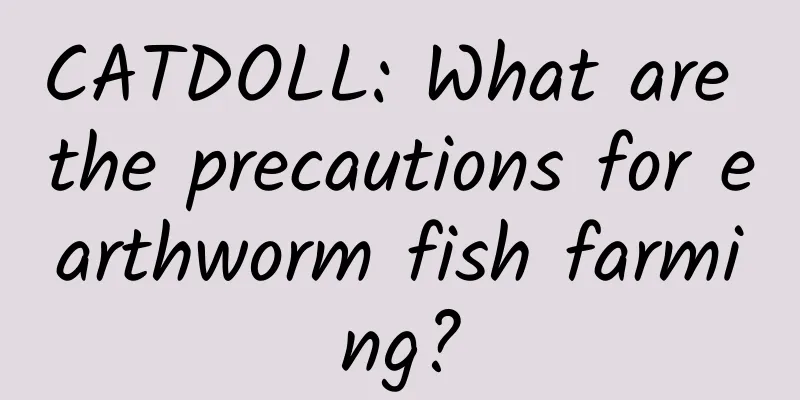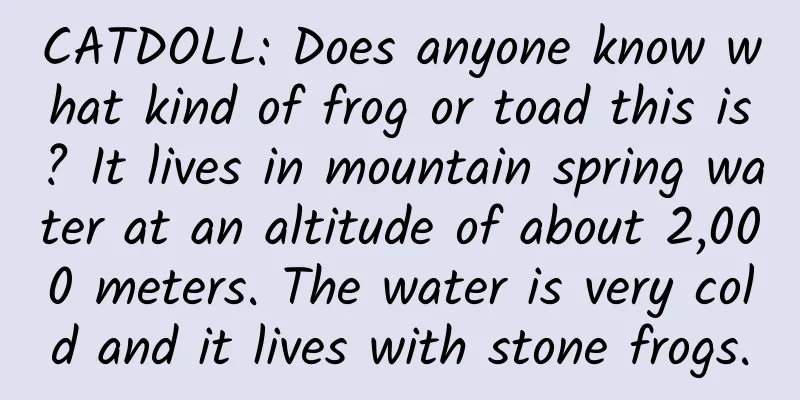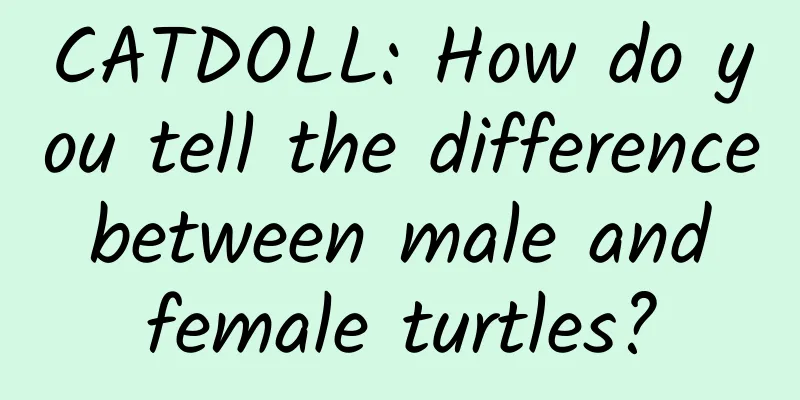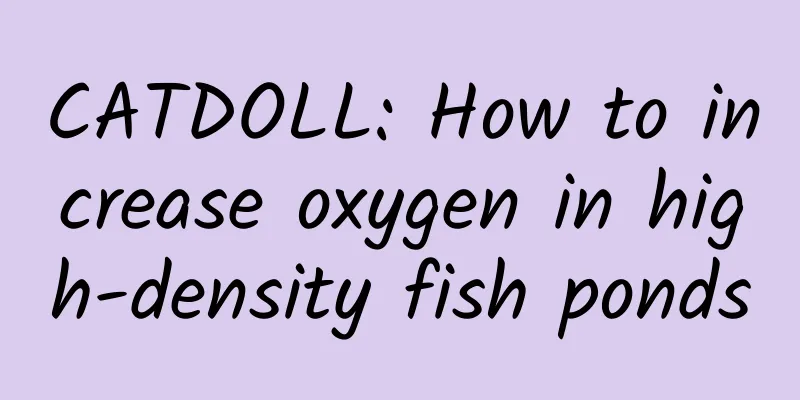CATDOLL : CATDOLL: Are there any risks in raising sea cucumbers?
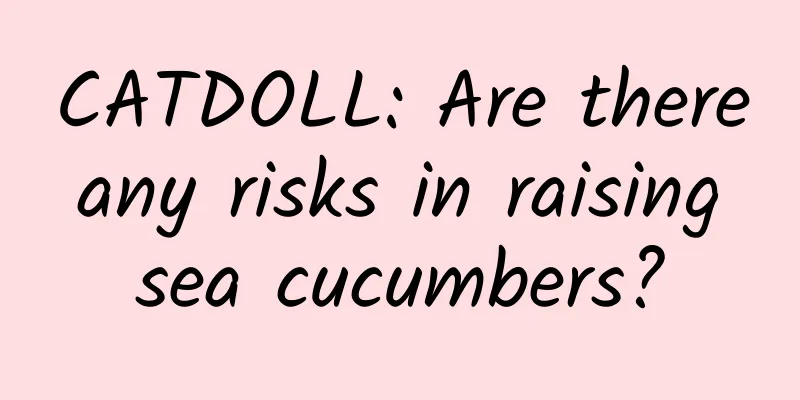
|
There are two risks in sea cucumber farming: one is that the sea cucumbers may get sick, and the other is that they may not sell well. Main causes of illness 1. Incorrect pool site selection and irregular pool construction lead to poor water exchange quality In recent years, due to the high nutritional value of sea cucumbers, considerable economic benefits, simple and easy breeding and management, many investors have been inspired to blindly select locations for investment without considering the environment and conditions. The construction of sea cucumber ponds is also not standardized. First, the conditions for water exchange in sea cucumber ponds are not smooth. Many cofferdam sea cucumber ponds have uneven terrain and different water depths in the ponds. The deepest part is more than 2.0m, and the shallowest part is only 30cm~40cm. The exchange volume of sea cucumber ponds during water circulation is very small, especially for sea cucumber ponds converted from shrimp ponds. The original shrimp ponds have higher terrain and shallower water levels. In order to meet the sea cucumber breeding standards, the bottom of the pond has to be dug. Many sea cucumber ponds have water inlet and outlet gates suspended more than 40cm from the bottom of the pond, leaving deep "dead water" during water exchange; second, the reef construction of shrimp ponds is unreasonable. Some sea cucumber ponds use stone reefs, each stone pile is less than 1.0m, and the stones are small, with a spacing and stacking distance of 5m~6m. Some sea cucumber ponds use woven bags to hold mud, with only three bags forming a triangle, and the spacing and stacking distance are also 5m to 6m. Others use tiles to form a herringbone shape, which is washed away by the tide at the beginning of breeding, which is not conducive to the habitat and summering of sea cucumbers, nor is it conducive to the attachment of benthic diatoms, hindering the normal life and feeding of sea cucumbers. 2. Incomplete dredging and disinfection of the ginseng pond led to water quality deterioration There are many sea cucumber ponds that have been cultivated for many years but are rarely dredged and disinfected, resulting in deep accumulation of sea cucumber feces, silt and algae on the bottom of the pond and reefs. In particular, the low-temperature algae on the bottom of the pond begin to rot and deteriorate after winter and summer, thus breeding bacteria, mold and other pathogens, affecting the normal growth of sea cucumbers, and ultimately causing the sea cucumbers to become thin and weak and become sick. 3. The stocking density is too high, resulting in a serious lack of natural basic bait organisms Many ginseng farmers ignore the geographical environment, water quality and the capacity of basic bait organisms in the ginseng ponds, and unilaterally pursue high yields and high profits. They increase the stocking density at all costs. In ginseng ponds where the breeding conditions are not ideal, the stocking density can reach as high as 100,000 heads per mu. In addition, they are reluctant to feed the sea cucumbers. As the sea cucumbers grow bigger and natural bait organisms are seriously lacking, their growth space also gradually shrinks, causing them to suffer from lack of oxygen and food, become weak and sick, and eventually die. 4. The technical quality of ginseng farmers is not high, and they lack the awareness of scientific breeding and disease prevention. This is a prominent problem brought about by the rapid development of sea cucumber farming. Many sea cucumber farmers have never been exposed to aquaculture and know little about the biological characteristics of sea cucumbers. There is no way to talk about prevention and treatment measures for sea cucumber diseases. Once sea cucumbers become sick, they are helpless, which not only delays the treatment of the sea cucumber disease, but also accelerates the development and spread of the disease, and ultimately leads to the death of the sea cucumber. In view of the main causes of sea cucumber diseases mentioned above, the author recommends taking the following measures to prevent and control sea cucumber diseases for reference. 1. Make good planning and layout, and standardize the construction of ginseng pools It is best to avoid the densely populated areas of sea cucumbers in the pond. Try to choose a pond that is close to the sea area, has smooth tides, can accommodate natural tides, has no large amount of fresh water injection and other pollution sources nearby, has good water quality, and is rich in basic bait organisms suitable for sea cucumbers to eat, especially sufficient benthic diatoms, preferably a hard muddy bottom, a water depth of more than 2.0m, separate inlet and outlet channels, the bottom of the pond cannot be lower than the low tide of the sea water, and the drainage gate is built at the lowest position of the bottom of the sea cucumber pond, so that the bottom water can be drained, the water flow of the sea cucumber pond is smooth, and the water quality is fresh, the bait is rich, and the purpose is achieved. It is necessary to choose the appropriate reef-building type according to local conditions and stack it according to the standard. Usually, the stone throwing reef is used. Generally, each pile of stones is not less than 2.0m, each stone is not less than 10kg, the row spacing of the stone throwing is 4m~5m, and the stacking distance is 2m~3m. The premise is that it is conducive to the habitat of sea cucumbers through the summer, conducive to the epiphyse of algae, and provides a good space, environment and bait for the normal growth of sea cucumbers. 2. Appropriately reduce the stocking density and improve the utilization rate of bait The stocking density of ginseng seedlings should be determined according to the basic productivity of the ginseng pond and the amount of water exchange, so as to increase the growth rate of sea cucumbers, enhance the physique of sea cucumbers, and prevent the occurrence of diseases. In particular, the basic productivity of the ginseng ponds converted from shrimp ponds is limited, so reasonable density is particularly important. According to the living habits of sea cucumbers and the status of natural bait organisms, the ginseng ponds in general sea areas are stocked with 300 heads/kg to 400 heads/kg of ginseng seedlings, and the stocking density should be controlled at 4,000 heads/mu to 5,000 heads/mu. In sea areas with better conditions and abundant natural bait organisms, and in ginseng ponds where feed is planned, the stocking amount can be appropriately increased. 3. Strictly clean and disinfect the ginseng pond to create a good ecological environment Sea cucumbers are benthic aquatic animals that live at the bottom of the water layer for many years. Therefore, the bottom environment and water quality of the ginseng pond are important conditions for the habitat of sea cucumbers. The deterioration of the bottom and water quality leads to high bacterial load, which is also the main cause of the disease of sea cucumbers. The ginseng pond converted from shrimp ponds should be selected with muddy bottom and require dredging and transformation. After the pond is dredged, the whole pond is sprinkled with 50kg/mu~100kg/mu of quicklime or 30ppm of bleaching powder for disinfection. After 1 week, water can be injected for fertilization and seedling cultivation after the drug effect disappears. For ginseng ponds that have been cultivated for more than 3 years, due to the long-term accumulation of silt, feces, algae, etc., it is more likely to cause bacterial diseases. Desilting and disinfection are particularly important. In addition to annual disinfection, it is best to disinfect with 50kg/mu~100kg/mu of quicklime every half a month to improve the bottom, so as to create a good habitat for sea cucumbers and prevent the occurrence and spread of diseases. 4. Disease control should focus on prevention, and achieve "prevention before disease occurs and early treatment when disease occurs" When releasing ginseng seedlings, try to release large-sized and healthy seedlings, and bathe them in 30mg/L of penicillin and streptomycin for 0.5 to 1.0 hours before entering the pond. Disease-free adult ginseng breeding ponds should be disinfected with quicklime once every 15 to 30 days, with a dosage of 30kg/mu・m, and sprinkled throughout the pond at low tide, which can have a good preventive effect. For diseased breeding ponds, it is necessary to improve the water quality and bottom environment, increase the amount of water change, and disinfect with 40kg/mu of quicklime, and send divers to collect diseased ginseng, and release the diseased ginseng in a small area of breeding ponds, and bathe them in 50mg/L of penicillin and streptomycin for 30 minutes, once every other day, and then release them into the breeding pond after the diseased ginseng is cured. Through investigation and analysis, the main causes of sea cucumber disease are summarized as follows: 1. Incorrect pool site selection and irregular pool construction lead to poor water exchange quality In recent years, due to the high nutritional value of sea cucumbers, considerable economic benefits, simple and easy breeding and management, many investors have been inspired to blindly choose locations and invest without considering the environment and conditions. The construction of sea cucumber ponds is also not standardized. First, the conditions for water exchange in sea cucumber ponds are not smooth. Many cofferdam sea cucumber ponds are uneven in terrain, and the water depth in the ponds is different. The deepest part is more than 2.0m, and the shallowest part is only 30cm~40cm. The exchange volume of sea cucumber ponds during water circulation is very small, especially the sea cucumber ponds converted from shrimp ponds. The original shrimp ponds have a higher terrain and a shallower water level. In order to meet the sea cucumber breeding standards, the bottom of the pond has to be dug. Many sea cucumber ponds have water inlet and outlet gates suspended more than 40cm from the bottom of the pond. There is always deep "dead water" when the water is exchanged; second, the reef construction of shrimp ponds is unreasonable. Some sea cucumber ponds use stone reefs, and each stone pile is less than 1.0m, and the stones are small, with a spacing and stacking distance of 5m~6m. Some sea cucumber ponds use woven bags to hold mud, with only three bags forming a triangle, and the spacing and stacking distance are also 5m to 6m. Others use tiles to form a herringbone shape, which is washed away by the tide at the beginning of breeding, which is not conducive to the habitat and summering of sea cucumbers, nor is it conducive to the attachment of benthic diatoms, hindering the normal life and feeding of sea cucumbers. 2. Incomplete dredging and disinfection of the ginseng pond led to water quality deterioration There are many sea cucumber ponds that have been cultivated for many years but are rarely dredged and disinfected, resulting in deep accumulation of sea cucumber feces, silt and algae on the bottom of the pond and reefs. In particular, the low-temperature algae on the bottom of the pond begin to rot and deteriorate after winter and summer, thus breeding bacteria, mold and other pathogens, affecting the normal growth of sea cucumbers, and ultimately causing the sea cucumbers to become thin and weak and become sick. 3. The stocking density is too high, resulting in a serious lack of natural basic bait organisms Many ginseng farmers ignore the geographical environment, water quality and the capacity of basic bait organisms in the ginseng ponds, and unilaterally pursue high yields and high profits. They increase the stocking density at all costs. In ginseng ponds where the breeding conditions are not ideal, the stocking density can reach as high as 100,000 heads per mu. In addition, they are reluctant to feed the sea cucumbers. As the sea cucumbers grow bigger and natural bait organisms are seriously lacking, their growth space also gradually shrinks, causing them to suffer from lack of oxygen and food, become weak and sick, and eventually die. 4. The technical quality of ginseng farmers is not high, and they lack the awareness of scientific breeding and disease prevention. This is a prominent problem brought about by the rapid development of sea cucumber farming. Many sea cucumber farmers have never been exposed to aquaculture and know very little about the biological characteristics of sea cucumbers. There is no way to talk about prevention and treatment measures for sea cucumber diseases. Once sea cucumbers become sick, they are helpless, which not only delays the treatment of the sea cucumber disease, but also accelerates the development and spread of the disease, and ultimately leads to the death of the sea cucumber. In view of the main causes of sea cucumber diseases mentioned above, the author recommends taking the following measures to prevent and control sea cucumber diseases for reference. 1. Make good planning and layout, and standardize the construction of ginseng pools It is best to avoid the densely populated areas of sea cucumbers in the pond. Try to choose a pond that is close to the sea area, has smooth tides, can accommodate natural tides, has no large amount of fresh water injection and other pollution sources nearby, has good water quality, and is rich in basic bait organisms suitable for sea cucumbers to eat, especially sufficient benthic diatoms, preferably a hard muddy bottom, a water depth of more than 2.0m, separate inlet and outlet channels, the bottom of the pond cannot be lower than the low tide of the sea water, and the drainage gate is built at the lowest position of the bottom of the sea cucumber pond, so that the bottom water can be drained, the water flow of the sea cucumber pond is smooth, and the water quality is fresh, the bait is rich, and the purpose is achieved. It is necessary to choose the appropriate reef-building type according to local conditions and stack it according to the standard. Usually, the stone throwing reef is used. Generally, each pile of stones is not less than 2.0m, each stone is not less than 10kg, the row spacing of the stone throwing is 4m~5m, and the stacking distance is 2m~3m. The premise is that it is conducive to the habitat of sea cucumbers through the summer, conducive to the epiphyse of algae, and provides a good space, environment and bait for the normal growth of sea cucumbers. 2. Appropriately reduce stocking density and improve bait utilization The stocking density of ginseng seedlings should be determined according to the basic productivity of the ginseng pond and the amount of water exchange, so as to increase the growth rate of sea cucumbers, enhance the physique of sea cucumbers, and prevent the occurrence of diseases. Especially for ginseng ponds converted from shrimp ponds, the basic productivity is limited, so reasonable density is particularly important. According to the living habits of sea cucumbers and the status of natural bait organisms, the ginseng ponds in general sea areas are stocked with 300 heads/kg to 400 heads/kg of ginseng seedlings, and the stocking density should be controlled at 4000 heads/mu to 5000 heads/mu. In sea areas with better conditions and abundant natural bait organisms, and in ginseng ponds where feed is planned to be fed, the stocking amount can be appropriately increased. 3. Strictly clean and disinfect the ginseng pond to create a good ecological environment Sea cucumbers are benthic aquatic animals that live at the bottom of the water layer for many years. Therefore, the bottom environment and water quality of the ginseng pond are important conditions for the habitat of sea cucumbers. The deterioration of the bottom and water quality leads to high bacterial load, which is also the main cause of the disease of sea cucumbers. The ginseng pond converted from shrimp ponds should be selected with muddy bottom and require dredging and transformation. After the pond is dredged, the whole pond is sprinkled with 50kg/mu~100kg/mu of quicklime or 30ppm of bleaching powder for disinfection. After 1 week, water can be injected for fertilization and seedling cultivation after the drug effect disappears. For ginseng ponds that have been cultivated for more than 3 years, due to the long-term accumulation of silt, feces, algae, etc., it is more likely to cause bacterial diseases. Desilting and disinfection are particularly important. In addition to annual disinfection, it is best to disinfect with 50kg/mu~100kg/mu of quicklime every half a month to improve the bottom, so as to create a good habitat for sea cucumbers and prevent the occurrence and spread of diseases. 4. Disease control should focus on prevention, and achieve "prevention before disease occurs and early treatment when disease occurs" When releasing ginseng seedlings, try to release large-sized and healthy seedlings, and bathe them in 30mg/L of penicillin and streptomycin for 0.5 to 1.0 hours before entering the pond. Disease-free adult ginseng breeding ponds should be disinfected with quicklime once every 15 to 30 days, with a dosage of 30kg/mu・m, and sprinkled throughout the pond at low tide, which can have a good preventive effect. For diseased breeding ponds, it is necessary to improve the water quality and bottom environment, increase the amount of water change, and disinfect with 40kg/mu of quicklime, and send divers to collect diseased ginseng, and release the diseased ginseng in a small area of breeding ponds, and bathe them in 50mg/L of penicillin and streptomycin for 30 minutes, once every other day, and then release them into the breeding pond after the diseased ginseng is cured. References: Of course, there are risks in investing big. |
<<: CATDOLL: How long can frozen squid be kept?
>>: CATDOLL: How many kilograms does Bletilla striata yield per mu?
Recommend
CATDOLL: What foods are incompatible with tomatoes?
1. What foods are incompatible with tomatoes? Foo...
Introduction to the role of cat tail
The function of cat's tail: 1. Coordinate the...
CATDOLL: How to breed mountain cockroaches? What are the basic conditions of breeding? What is the market price? Please help?
1. How to breed mountain cockroaches? What are th...
CATDOLL: Where does Rana oil grow?
1. Where does Rana oil grow? Rana oil is not actu...
CATDOLL: The correct method and precautions for feeding salt to sheep
How to feed sheep salt correctly Feeding sheep sa...
CATDOLL: Is the mantis shrimp freshwater or saltwater?
1. Is the mantis shrimp freshwater or seawater? S...
CATDOLL: In order to improve the home environment, what kind of fish is better to raise at home? What are some good-looking small fish that are must-haves to raise at home?
1. In order to improve the home environment, what...
CATDOLL: How to process and dry earthworms (How to process and dry earthworms so that they can be eaten)
1. How to process dried earthworms? The harvested...
CATDOLL: Is cicada shell poisonous? How much should I release each time?
Do cicadas have parasites? Are cicadas poisonous?...
CATDOLL:How to breed frogs?
1. How to raise frogs? Feeding and management of ...
CATDOLL: Is the Chinese turtle valuable now? How to raise it?
1. Is the earthworm valuable now? How to raise it...
CATDOLL: Effective methods and precautions to improve sow conception rate
Background The sow conception rate is one of the ...
CATDOLL: How maggots are produced
How do maggots come about? Maggots are produced f...
CATDOLL: How many years do you have to raise golden cicadas before you can sell them? Zhihu (How many years do you have to raise golden cicadas before you can sell them? Zhihu article)
1. How many days does it take to raise cicada see...
CATDOLL: How often are earthworms fed (How often are earthworms fed)
1. How often should you feed earthworms in a buck...



